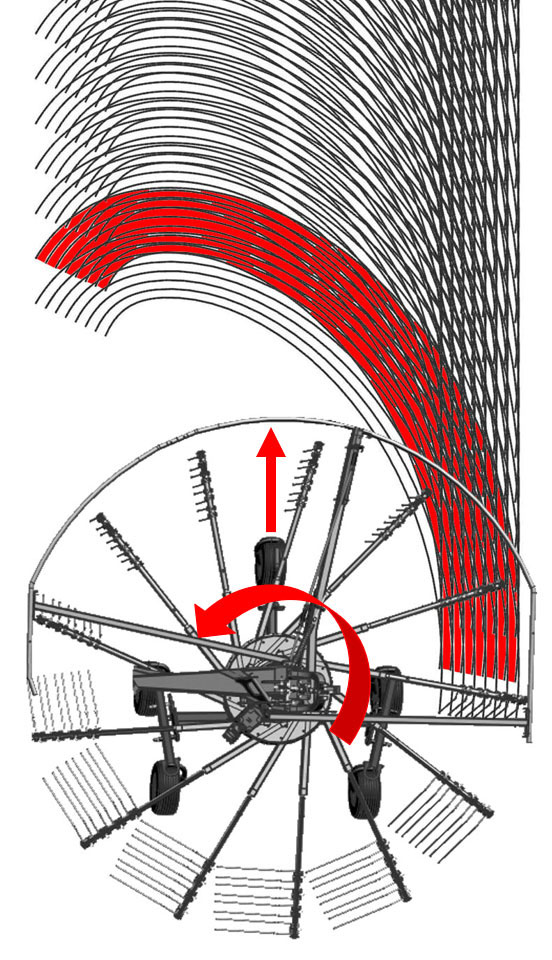5
Strong reasons why a rotary rake is counterproductive for your farming.
The established rotary rake technology has been on the market for over 50 years. Its technical development is completely exhausted. The challenges of practice and the higher quality awareness of farmers are increasingly putting this technology under pressure.
1. Impurities
unfavorable bacteria and fungi, dust, earth, sand, stones, foreign objects,manure and muck particles, mice, rotten undergrass
3. Losses
leaf losses, crumble losses, raking losses, fermentation losses, losses at thefeeding table, wear on machines
3. Unreliable in difficult conditions
moist and soft soils (flood plains and boggy areas), uneven and unrolled fields, dry and stony topsoil, low peat density, cover crops, corn straw as well various special crops (hemp, sorghum)
4. Deficits in performance and other factors
compacted / twisted swath, limited working speed, higher power requirement, worse after-drying at the swath, not flexible in working width and direction of swathforming
5. Endangering animal health
contaminated feed causes inflammation, fertility and claw problems, reduces animal performance, digestive issues with horses
Difficult soil conditions in comparison
Change the color to match your brand or vision, add your logo, choose the perfect layout, modify menu settings, add animations, add shape dividers, increase engagement with call to action and more.

